Contents
- 1. Origin, definition and vital energy
- 2. Breathing
- 3. Types
- 3.1 Focussing one’s attention on the breath
- 3.2 Anulom-vilom pranayam
- 3.3 Antar (internal) kumbhak pranayam
- 3.4 Bahya (external) kumbhak pranayam
- 3.5 Sammishra pranayam
- 3.6 Shuddhikriya pranayam
- 3.7 Nadishuddhi (Nadishodhan) – Purification of channels
- 3.8 Shitalikaran pranayam
- 3.9 Mudra pranayam: Bhagshaha shvasan (breathing with various parts of the body)
- 3.10 Other pranayams
- 3.11 According to the day and night
- 3.12 Sanhita pranayam: Sagarbha and agarbha (nirgarbha) pranayams
Pranayam is included in Hathayoga. The eight parts of Ashtangyoga (Eight fold Yoga) advocated by Patanjali are 1. Yam (restraints), 2. Niyam (regulations), 3. Asans (postures), 4. Pranayam (controlled breathing), 5. Pratyahar (introversion), 6. Dharana (concentration), 7. Dhyan (meditation) and 8. Samadhi (superconscious state). Pranayam is the fourth part among them.
1. Origin, definition and vital energy
A. The word pranayam (प्राणायाम) is derived from two words pran (प्राण) and ayam (आयाम). Ayam means to regulate or suppress. Pranayam means regulating the vital energies (pran) in the body.
B. The word pranayam is formed from pran (प्राण) + ayam (अयाम). Ayam means to increase. Pranayam means increasing the vital energy.
C. Out of the subtle (subtle means those which cannot be perceived by the five senses, mind and intellect) frequencies in the atmosphere the proportion of the 360 tama predominant frequencies emitted from the earth is 40%. These are gross among the subtle frequencies. The 108 sattva predominant frequencies coming from the ajanaj or the star region (nakshatralok) too are 40% (refer ‘Science of Spirituality : Chapter 25 – Composition of the Universe). These are most subtle. In pranayam the word ayam is derived from a (to come/to absorb) and yam (continuously). 360 tama frequencies and 108 sattva frequencies are continuously entering the body. The main aim of pranayam is to increase the ability to face these 360 tama frequencies.
The vital energies performing various functions in the body have various names. The main among them are the panchapran (five main units of vital energy) and the panchaupapran (the five sub-units of vital energy). Actually there is only one vital energy but according to its functions they are named as panchapran and panchaupapran. With every breath and thought the total oxygen leaves its position in the Brahmarandhra. During inspiration it descends from the Brahmarandhra and on expiration resumes its place in the Brahmarandhra. So also in the interval between two thoughts it goes to the Brahmarandhra.
D. Out of the nine serpents (navanag) – the nine groups of pure spiritual particles, five serpents move within the body as the five internal energies (five vital energies, panchapran). The remaining four are not present in the body of an average person and do so only with spiritual progress, that is all the principles in the universe (brahmanda) enter the subtle body (pinda).
1.1 Panchapran (the five main units of vital energy)
1. Pran : The act of inspiration and the process of incorporation of oxygen into every cell occur because of the ‘pran’ vital energy. Both, the energy performing these functions and the total vital energy too is called ‘pranshakti’. Hence there is a possibility of confusion in the meaning. To avoid such confusion one should remember the simple rule that when words like pran, apan, udan, etc. are used, in that context it refers to the ‘pran’ energy causing inspiration. Otherwise one should consider it as the total vital energy. The main seat of pran is in the heart.
2. Udan : This energy flows upwards. The act of expiration and speaking occur because of this energy. Actually inspiration is an action and expiration a reaction. Its main site is the throat.
3. Saman : Intestinal movements occur because of this energy. To experience the saman energy place the tip of the middle finger of the right or left hand on the navel, note the experience and then read the following section. The moment the finger touches the navel, inspiration or expiration stops, that is, kumbhak occurs. To activate the kundalini (spiritual energy) movement of the saman energy is required. To achieve that, nadibandha (blocking of the channels) is performed. The energy causing nadibandha is called kilak. Kilak is the energy produced by expulsion of saman energy. Its main seat is the navel.
4. Vyan : Most of the voluntary and involuntary actions in the body (beating of the heart, etc.) occur because of this energy. It has no specific seat and is distributed throughout the body.
5. Apan : Excretory functions of the body such as sweating, urination and defaecation, passing flatus, ejaculation, delivery of a baby, etc. occur due to this energy. Its main site is the anus.
स्पर्शान् कृत्वा बहिर्बाह्यांश्चक्षुश्चैवान्तरे भ्रुवो: ।
प्राणापानौ समौ कृत्वा नासाभ्यन्तरचारिणौ ।। – श्रीमद्भगवद्गीता ५:२७
Meaning: Rejecting external objects and concentrating the gaze midway between the two eyebrows, sages equalise the pran and apan within the nose, keeping only the Final Liberation (Moksha) as their ultimate target. – Shrimadbhagvadgita 5 : 27.
An offering is made unto these vital energies prior to commencing a meal.
The function of some vital energies in relation to the universe is as follows:
-
Pran: the sun
-
Apan: the earth
-
Saman: the hollow/cavity between the sun and the earth.
1.2 Panchaupapran (the five sub-units of vital energy)
1. Nag: causes belching
2. Kurma: causes blinking
3. Krukal: causes sneezing
4. Devdatta: causes yawning
5. Dhananjay: This energy is spread throughout the body and persists in the individual’s body for sometime even after death.
2. Breathing
2.1 Definition and meaning
Everything that is done to maintain one’s existence and form is called breathing. Breathing starts from the time of conception. The act of absorption of air, water, and food by the body cells is referred to as ‘chay (चय)’ and that of excretion as ‘apachay (अपचय)’. The word chayapachay (चयापचय) is derived from the combination of the words chay and apachay.
2.2 Through the nine openings (navadvars) and the skin
In living organisms, tama and sattva predominant frequencies, that is energy enters and leaves the body through the nine openings and the skin. These nine openings are also called the nine centres (navachakras).
| The nine openings in the body and the skin |
The amount of energy entering the body in all organisms % |
The amount of energy expelled by the body in all organisms % |
|
|---|---|---|---|
| 1. The opening | Number | ||
| a. Eyes | 2 | 2 | 2 |
| b. Ears | 2 | 2 | 1 |
| c. Nostrils (through the medium of air) |
2 | 64 | 50 |
| d. Mouth (through the medium of food and water) |
1 | 30 | 2 |
| e. Penis | 1 | 1 | 1 |
| f. Anus | 1 | 1 | 1 |
| 2. Skin | – | – | 43 |
| Total | 9 | 100 | 100 |
2.3 Account of the energy
| Amount of energy % | |||
|---|---|---|---|
| Average person |
Saint of 70% level |
Saint of 90% level |
|
| 1. Input | |||
| A. Absorption of energy from outside the body |
|||
| 1. Through air (nose) | 50 | 30 | 5 |
| 2. Through water (mouth) | 20 | 10 | 5 |
| 3. Through food (mouth) | 20 | 10 | 5 |
| 4. Through eyes, ears, penis and anus |
10 | 10 | 5 |
| B. Energy produced in the body |
0 | 40 | 70 |
| Total accumulated energy | 100 | 100 | 90 |
| 2. Output / Expenditure | |||
| A. Use of energy for oneself | 10 | 5 | 2 |
| B. Release of energy | 90 | 50 | 20 |
| Total accumulated energy | 100 | 55 | 22 |
| 3. Accumulated energy = Input – expenditure |
0 | 45 | 68 |
With practice of pranayam since less energy is spent on oneself it could result in accumulation of energy.
2.4 Breathing in unison (samashvasan)
The expulsion and absorption of energy by all the cells in the body simultaneously, is called breathing in unison. Such breathing occurs because of pranayam. As a result of breathing in unison since unified energy is used, less energy is utilised and thus it accumulates in the body. Similarly if one synchronises one’s breathing with that of any person or animal then one can come to know his or its thoughts and emotions. So also one can control him. These two can be achieved with pranayam.
3. Types
There are several types of pranayams. Information on them can be obtained from a number of books on the subject. Since information on pranayam only from the spiritual viewpoint is discussed here all the types have not been explained in detail.
Slow breathing [is referred to as purak, abhyantarvrutti (attitude) or Brahma], holding it for sometime in the chest [is called purak kumbhak or antar kumbhak, stambhavrutti (pillar attitude) or Vishnu], slow expiration [is called rechak, bahyavrutti (external attitude) or Mahesh] and finally holding the breath for sometime (is called rechak kumbhak or bahya kumbhak). Kumbhak not related to internal or external is called ‘keval (simple) kumbhak’. When kumbhak is practised controlling one’s breath it is called ‘sahit kumbhak’. When kumbhak occurs automatically, without any effort it is called ‘simple kumbhak’.
3.1 Focussing one’s attention on the breath
On an average one breathes 21,600 times per day. Focussing one’s attention on the breath is considered as continuous chanting (ajapajap) of the ‘So’ham (सोऽहं)’ (He is I) mantra. Continuous chanting is that which occurs without one’s own efforts.
3.2 Anulom-vilom pranayam
The word anukaran (अनुकरण) is formed from two words ‘anu (अनु) + karan (करण). ‘Anu’ means that which is already existing and ‘karan’ means an action. With reference to this, anulom means the act of breathing as one usually does. In ‘pratilom (प्रतिलोम)’, ‘prati (प्रति)’ means opposite and ‘pratilom’ means doing the opposite of inspiration, that is expiration.
There is no need to contemplate on how many seconds purak, kumbhak and rechak take because as one reduces the breath gradually, after some years one can practise kumbhak for a maximum period of time. This is the very motive of pranayam. Generally, the duration of inspiration is thrice that of expiration. One should try to equalise the two. In the final stage, the duration of expiration should be a little more than that of inspiration.
A. Chandranulom (Chandrabhed): In this, both the inspiration and expiration are done through the left nostril [through the moon (Chandra) or Ida channel]. The right nostril is closed with the thumb of the right hand. In the beginning one should perform nine such rounds (avartans). Later as one gets habituated to them one should perform twenty-five to thirty rounds. At such times the duration of purak and rechak should be equal. When performing them one should chant a long Omkar in one’s mind.
B. Suryanulom (Suryabhed): In this, both the inspiration and expiration are done through the right nostril [through the sun (Surya) or Pingala channel]. The ring or little finger of the right hand is used to close the left nostril.
The benefits of these types of pranayam are as follows. Usually breathing occurs as follows. Breathing occurs for about an hour through the right nostril. Then for two to four minutes through both the nostrils. Then again through the left nostril for an hour and later for two to four minutes through both. Then again through the right nostril. This cycle goes on continuously. By practising anulom-vilom pranayam one gradually gets used to breathing through both nostrils. This facilitates the opening of the Sushumna channel.
3.3 Antar (internal) kumbhak pranayam
The act: Slow inspiration (purak) – holding the breath for sometime (kumbhak) – slow expiration (rechak).
3.4 Bahya (external) kumbhak pranayam
The act : slow inspiration (purak) – slow expiration (rechak) – holding the breath for sometime (kumbhak).
Besides getting habituated to surviving without oxygen the benefits of pranayam are obtained faster with bahya kumbhak than with antar kumbhak. However the risk in pranayam is higher with bahya kumbhak.
Bandha and kumbhak: ‘In the science of Hathayoga some bandhas from among the types of postures (asans) have been mentioned. They are yogabandha, mahabandha, mahavedha, uddiyan, mulbandha, jalandharbandha, etc. While holding the breath during kumbhak one needs to close some openings out of the nine openings in the body. These yogic bandhas prove very useful for that purpose. A bandha is also useful in directing vital energy from a specific part of the body into another. If one wishes to acquire mastery over pranayam then one should practise bandhas.’(1) Kumbhak (breath holding) performed without bandha may cause headaches, a paunch, etc.
3.5 Sammishra pranayam
The act : slow inspiration (purak) – holding the breath for sometime (kumbhak) – slow expiration (rechak) – holding the breath for sometime (kumbhak).
3.6 Shuddhikriya pranayam
A. Kapalbhati : Kapal (कपाळ) means the forehead and bhati (भाती) to illuminate. Since the cavities in the bones of the nose and forehead are purified by it, this type of pranayam is called kapalbhati (कपालभाती). It is performed by inspiration followed by sudden contraction of the abdomen, expiration and then inspiration while relaxing the abdomen.
B. Bhasrika : Bhasrika means the bellows of the blacksmith. This is a mixture of kapalbhati and ujjayi pranayams.
C. Normal breathing, kapalbhati and bhasrika : In normal breathing, inspiration is active while expiration is passive. In bhasrika both inspiration and expiration are active. In kapalbhati, as usual the inspiration is active but expiration is more active. Generally, the rate of respiration is sixteen to eighteen breaths per minute. In both, bhasrika and kapalbhati the rate rises to fifty to hundred per minute. There is a higher chance of hyperventilation with carbon dioxide when performing bhasrika rather than with kapalbhati.
3.7 Nadishuddhi (Nadishodhan) – Purification of channels
Nadishuddhi can be done in two ways as follows.
1. Samanu – that is by chanting a bijamantra
2. Nirmanu – that is by some physical action without chanting a bijamantra.
A. Technique
1. Close the right nostril with the right thumb.
2. Breathe in very slowly, silently and regularly through the left nostril (purak).
3. Close the left nostril with the little finger and / or the ring finger.
4. Hold the breath for as long as possible without effort (purak kumbhak). (Some do not advocate holding the breath.)
5. Remove the thumb of the right hand from the right nostril and breathe out very slowly, silently and gradually through the right nostril (rechak).
6. Hold the breath for as long as possible, without effort (rechak kumbhak). (Some do not advocate holding of the breath.)
7. Breathe in slowly, silently and gradually through the right nostril.
8. Close the right nostril with the right thumb.
9. Hold the breath for as long as possible without effort. (Some do not advocate holding the breath.)
10. Remove the little and/or ring finger and breathe out very slowly, silently and gradually through the left nostril.
11. Do not breathe in for as long as possible without effort. (Some do not advocate holding of the breath.)
This is called one round (avartan) of nadishuddhi. Inspiration and expiration are acts to be performed steadily in one rhythm. In the beginning, one should perform seven to eight rounds of nadishuddhi practising the steps from numbers 2 to 11.
B. Benefits
1. Generally breathing occurs as follows. Inspiration and expiration takes three to four seconds. Hence respiration occurs fifteen to twenty times in one minute. When practising pranayam both the acts of inspiration and expiration should be performed slowly, that is, both should take ten to fifteen seconds instead of three to four seconds each. Initially no matter how hard a seeker tries to breathe slowly, the lungs get filled with air within five to seven seconds of breathing through both the nostrils. However if one tries to breathe in slowly through one nostril then it takes ten to fifteen seconds for the lungs to get filled up with air. The same holds good for expiration. No matter how slowly one expires through both the nostrils it takes atleast five to seven seconds. On the contrary, if one expires slowly through one nostril, it takes ten to fifteen seconds. Thus breathing occurs slowly. Hence when practising pranayam initially, to develop the habit of breathing extremely slowly, this technique is useful.
2. Ida and Pingala : This technique is useful for regulating the energy flow through these channels and to facilitate the activation of the Sushumna channel. By practising this pranayam one is also able to activate either the Ida or Pingala, as desired.
C. Limitations: Once one is able to breathe slowly one should stop using the nirmanu technique, since it involves the movement of hands and consequently the mind cannot concentrate fully.
D. Anulom-vilom and nadishuddhi pranayam
| Anulom-vilom pranayam |
Nadishuddhi pranayam |
|
|---|---|---|
| 1. Breathing extremely slowly | Efforts are required | Occurs naturally |
| 2. Increasing or decreasing the sattva and raja components according to the requirement |
Impossible | Possible |
| 3. Altering the flow of vital energy through the Ida–Pingala channels so as to facilitate worldly activities. |
Impossible | Possible |
| 4. Obstacles in meditation due to movement of fingers |
Meditation becomes easier since there are no movements of fingers |
Possible |
E. Other techniques
1. When inspiring through the left nostril utter the vayubijamantra ‘yam’ in the mind, sixteen times. Do not expire till it is chanted sixty-four times and after thirty-two times expire through the right nostril. Later when inspiring through the right nostril chant the agnibijamantra ‘ram’ in the mind sixteen times. Do not expire till it is chanted sixty-four times and expire slowly through the left nostril after chanting it thirty-two times.
2. When inspiring through the left nostril chant the vahnibijamantra ‘tham’ sixteen times. Do not expire till the vayu bijamantra ‘yam’ is chanted sixty-four times. Then chanting ‘lam’ the amrutbija or pruthvibijamantra thirty-two times gradually expire through the right nostril. Then when inspiring chant ‘lam’, when holding the breath ‘yam’ and when expiring ‘tham’ in the mind in the same proportion as given above.
3. Inspire till Lord Brahma’s bijamantra ‘a’ is chanted slowly, sixteen times in the mind. After inspiration chant Vishnu’s bijamantra ‘ou’ sixty-four times. When expiring chant Shiva’s bijamantra ‘m’ thirty-two times.
In the above three techniques the proportion of purak, kumbhak and rechak is 1:4:2.
3.8 Shitalikaran pranayam
This pranayam overcomes anxiety, stress and helps in keeping the mind calm along with physical relaxation. It also increases the immunity of the respiratory system against disease. Out of these pranayams, sadant pranayam is useful for those suffering from pyorrhoea (pus in the gums).
A. Sitkari: First expire. Then turning the tongue inwards press its tip below the upper teeth. Hold the lips as they remain when one is smiling. Cavities are created between the edges of the lips and the twisted tongue. Inspire air through these cavities making the sound ‘si’. Once the chest is filled with air, stop purak, close the mouth and do rechak. Repeat this four to five times.
B. Shitali: First put the tongue out a little, from in between the lips, and lift it on both sides. Thus the tongue assumes the shape of a canoe. Then compress the tip of the tongue with the lips, creating a cavity there. Gradually inhale air through this cavity. The air passing over the tongue becomes cool and enters the chest. After purak is complete close the mouth and do rechak through the nose. This constitutes one round (avartan). Perform three to four such rounds.
C. Sadant: First press the teeth against each other and mould the lips, as if smiling. Then inhale air slowly, making a sound through the space between the teeth. When inspiration stops, perform rechak through the nose. This is one round. Perform three to four such rounds.
3.9 Mudra pranayam: Bhagshaha shvasan (breathing with various parts of the body)
‘This is a type of breathing to be done before doing pranayam. This breathing proves useful to facilitate proper breathing and to make full use of the functional capacity of the lungs.
A. Adham (breathing through the abdomen): Perform the chit mudra. Sit erect either in sukhasan (the ease posture), vajrasan (the adamant posture) or padmasan (the lotus posture ). Take a deep, slow breath (purak). Let the abdomen relax slowly during inspiration. Hold the breath only for a second (antar kumbhak) and then contracting the abdomen gradually expire (rechak). Before taking the next breath, hold it again for a second in this state itself (bahya kumbhak). Then gradually relaxing the abdomen perform purak. Continue this slow cycle of inspiration-expiration. Do not give jerks or apply pressure. Let the breathing be continuous and regular.
When performing purak since the abdomen is relaxed, the diaphragm between the chest and abdomen is reduced. As a result, a cavity develops in the lungs (specially the lower zones). Naturally the external air does not reach these zones. Due to the rhythmic movement between the abdomen and diaphragm, the abdominal organs receive equal massage and the blood circulation too increases.
B. Madhyam (chest breathing): Perform the chinmay mudra. The posture adopted should be the same as above. When performing purak instead of the abdomen, relax the chest to a greater extent but gradually. When performing rechak contract it slowly. Do not allow abdominal movements to occur. With this type of breathing, air enters the middle zone of the lungs.
C. Adya (breathing with the help of shoulders): Perform the adi mudra with the hands. The posture adopted should be the same as above. When performing purak slowly raise the shoulders, anteriorly. When performing rechak lower them posteriorly.
Raising the shoulders creates a cavity in the upper zone of the lungs and the air inhaled enters that part. Otherwise since one’s respiration is superficial that part of the lung is not used much.
D. Yogic breathing: Perform the Brahma mudra with the hands. “Yogic breathing” is a combination of the above three types of breathing. Breathing should be done first with the help of the abdomen, then the chest and finally with the help of the shoulders. During expiration too the same organs should be contracted in the same sequence. This breathing should be performed calmly and regularly without strain on any part or tightening of the face.’(2)
3.10 Other pranayams
A. Ujjayi
-
‘Expire completely and wait for a moment. Then start inspiring slowly through both the nostrils. Let the soft palate feel the air entering. When breathing let the glottis close the food pipe and wind pipe equally so that the air flowing through the half closed wind pipe makes a hissing “s” sound.
-
Making a gesture of swallowing, bend the neck and let the breath be held automatically. Maintaining this state for some moments make attempts to be aware of the breath held below the throat.
-
Then keeping the glottis half open and making the hissing sound “s” let the air be exhaled through the left nostril.
-
Let the glottis open completely and expel all the air.
-
This constitutes one round (avartan): Do 4 to 5 such rounds.
In the other types of ujjayi, inspiration-expiration is done through each nostril. The importance in this type is attributed to decreasing the respiratory rate by compressing the palate upwards.’(3)
B. Bhramari
-
‘Inhale through both the nostrils and let the air circulate in the mouth imitating the sound of a drone. Let the entire body feel the vibrations generated. Then let the breath stop automatically.
-
While exhaling, mimic the melodious sound of a female honeybee. Now it becomes easier. Wait after exhalation for a second. Repeat these rounds several times.
About bhramari it is said: “By practising pranayam this way the yogi experiences Bliss beyond description !” ’ (4)
3.11 According to the day and night
From sunrise to sunset one should inspire through the left nostril and expire through the right. From sunset to sunrise one should inspire through the right nostril and expire through the left.
During the day, when there is sunlight one should inspire through the left nostril so that the moon channel (Chandra nadi) is activated and at night, in the absence of the sun one should inspire through the right nostril so that the sun channel (Surya nadi) is operational. Thus if one performs acts contrary to the environment then the effects of the environment on oneself are reduced. Also with breathing through one nostril throughout the day one gets used to slow breathing, quickly.
3.12 Sanhita pranayam: Sagarbha and agarbha (nirgarbha) pranayams
The pranayam done chanting a mantra is called sagarbha and that done without a mantra is called agarbha (nirgarbha). The mantra is naturally chanted mentally because if done loudly then one will only be able to expire.
A. The three step (tripad) Gayatri: In this, Om (ॐ) appears twice as given below.
ॐ भूर्भुव: स्व: ।
ॐ तत् सवितु: वरेण्यं भर्गो देवस्य धीमहि ।
ॐ धियो योन: प्रचोदयात् ।
Om bhurbhuvaha svaha.
Om tat savituhu varenyam bhargo devasya dhimahi.
Om dhiyo yonaha prachodayat.
In the three step Gayatri if one mentally chants the first step during inspiration, the second when holding the breath and the third during expiration then pranayam with purak, kumbhak and rechak in the proportion of l : 4 : 2, too occurs.
B. The four step (chatushpad) Gayatri: In this four step Gayatri besides the three Oms of the three step Gayatri, the fourth is added after ‘prachodayat’. Due to this fourth Om, kumbhak (breath holding) after rechak (expiration) also occurs.
Reference:
‘Path of Deliberate Rigour (Hathayoga)’, published by Sanatan Sanstha.
[1]. Vol 6. Pg. 33 First Edition, Bharatiya Sanskrutikosh. Publisher : Pandit Mahadevshastri Joshi, Secretary, Bharatiya Sanskrutikosh Mandal, 410 Shanivarpeth, Pune 411 030.
Yoga – Asane, Pranayam, Mudra, Kriya. First edition, June 1996. Publisher : V.N.Limaye, Sachiv – Vivekanand Kendra Prakashan, Marathi Section, 1890, Sadashiv Peth, Natubag, Pune – 411 030.
[2]. Pg. 53 [3]. Pg.56
[4]. Pg. 58.

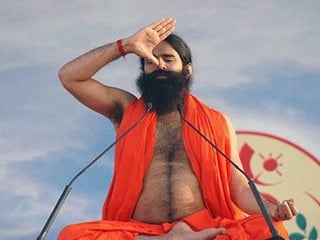
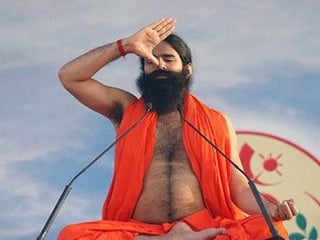 How to gain control over mind by practicing pranayam?
How to gain control over mind by practicing pranayam?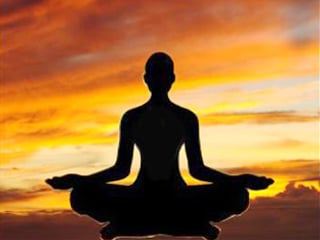 Righteousness - key to control desires
Righteousness - key to control desires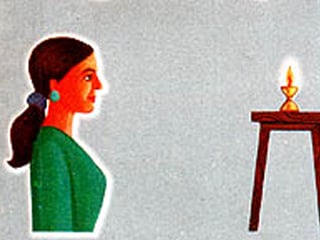 How does tratak help in increasing ones sattvikta?
How does tratak help in increasing ones sattvikta?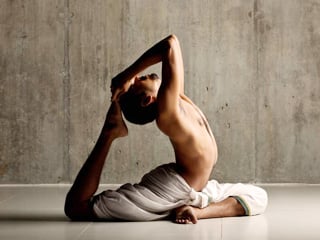 What is the motive behind enduring pain in Hathayoga?
What is the motive behind enduring pain in Hathayoga?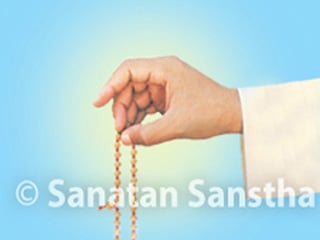 Chanting of Lord's Name: Best tool for observing silence ( maun vrat )
Chanting of Lord's Name: Best tool for observing silence ( maun vrat )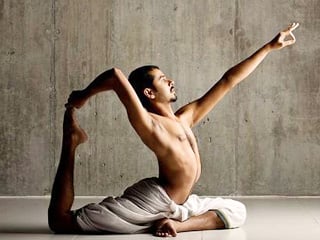 How does mudra assist in meditation?
How does mudra assist in meditation?